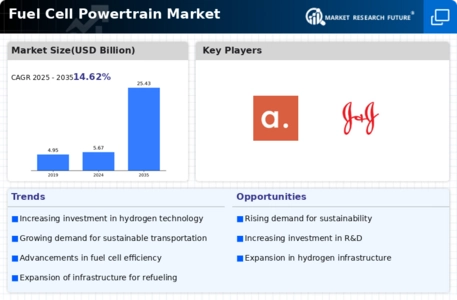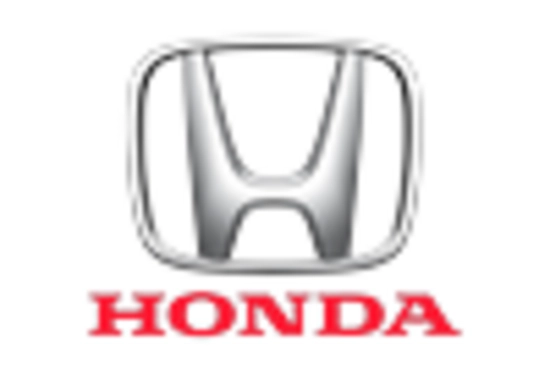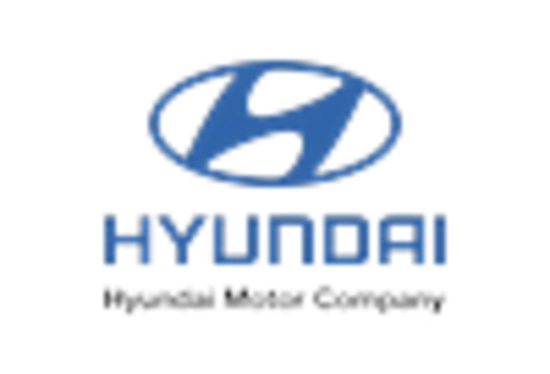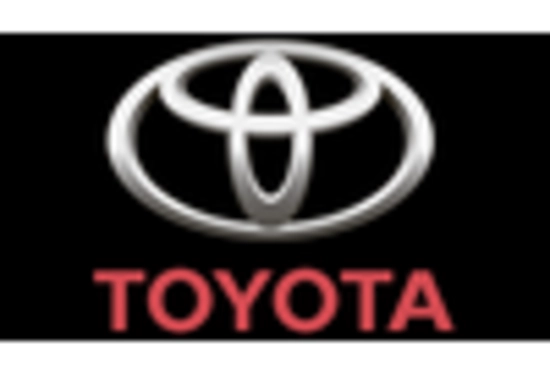The Fuel Cell Powertrain Market is currently characterized by a dynamic competitive landscape, driven by increasing demand for sustainable energy solutions and advancements in hydrogen fuel cell technology. Major players such as Toyota Motor Corporation (Japan), Hyundai Motor Company (South Korea), and Plug Power Inc. (US) are at the forefront, each adopting distinct strategies to enhance their market positioning. Toyota, for instance, continues to emphasize innovation in fuel cell technology, focusing on the development of next-generation hydrogen fuel cells that promise higher efficiency and lower costs. Meanwhile, Hyundai is actively pursuing regional expansion, particularly in Europe and North America, where it has established partnerships to bolster its hydrogen infrastructure. Plug Power, on the other hand, is concentrating on digital transformation, integrating AI and IoT into its fuel cell systems to optimize performance and reliability, thereby shaping a competitive environment that prioritizes technological advancement and sustainability.
In terms of business tactics, companies are increasingly localizing manufacturing to reduce costs and enhance supply chain resilience. This trend is particularly evident in the Fuel Cell Powertrain Market, which appears to be moderately fragmented, with key players exerting considerable influence over market dynamics. The collective strategies of these companies not only enhance their operational efficiencies but also contribute to a more robust competitive structure, where collaboration and innovation are paramount.
In August 2025, Toyota Motor Corporation (Japan) announced a strategic partnership with a leading European energy provider to develop a comprehensive hydrogen supply chain. This collaboration is expected to facilitate the deployment of hydrogen fuel cell vehicles across Europe, significantly enhancing Toyota's market presence in the region. The strategic importance of this partnership lies in its potential to address infrastructure challenges, thereby accelerating the adoption of hydrogen technology in the automotive sector.
Similarly, in September 2025, Hyundai Motor Company (South Korea) unveiled its plans to invest in a new hydrogen production facility in North America. This initiative aims to support the growing demand for hydrogen fuel and is indicative of Hyundai's commitment to establishing a strong foothold in the North American market. The establishment of this facility is likely to enhance supply chain efficiency and reduce reliance on imported hydrogen, positioning Hyundai as a leader in the regional fuel cell market.
In October 2025, Plug Power Inc. (US) launched a new AI-driven fuel cell management system designed to optimize energy consumption and extend the lifespan of fuel cell systems. This innovative approach not only enhances operational efficiency but also aligns with the broader trend of digitalization within the industry. The introduction of such advanced technologies underscores Plug Power's focus on maintaining a competitive edge through continuous innovation and adaptation to market needs.
As of October 2025, the Fuel Cell Powertrain Market is witnessing significant trends such as digitalization, sustainability, and the integration of advanced technologies like AI. Strategic alliances among key players are increasingly shaping the competitive landscape, fostering collaboration that enhances innovation and operational efficiency. Looking ahead, it is anticipated that competitive differentiation will evolve, shifting from traditional price-based competition to a focus on technological innovation, supply chain reliability, and sustainable practices. This transition is likely to redefine the parameters of competition, compelling companies to invest in cutting-edge technologies and strategic partnerships to maintain their market positions.

















Leave a Comment